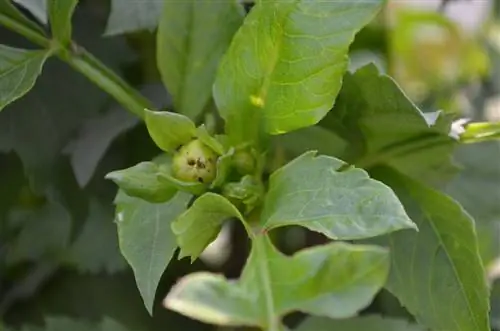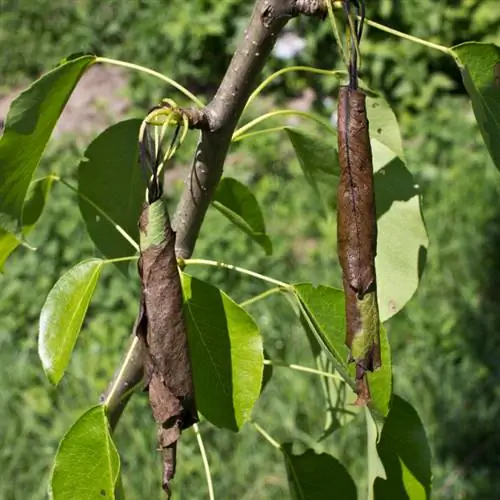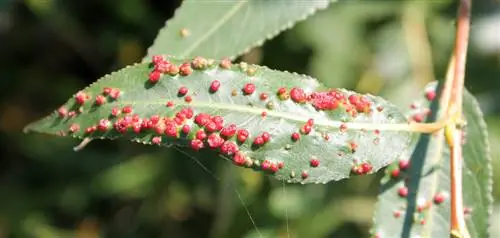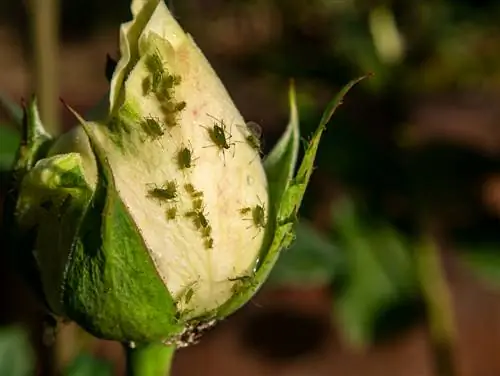- Author admin [email protected].
- Public 2023-12-16 16:46.
- Last modified 2025-01-23 11:22.
It is annoying when the beautiful flowers are attacked by pests. They indicate an imbalance or suboptimal site conditions. By promoting beneficial insects, harmful insects have fewer chances.
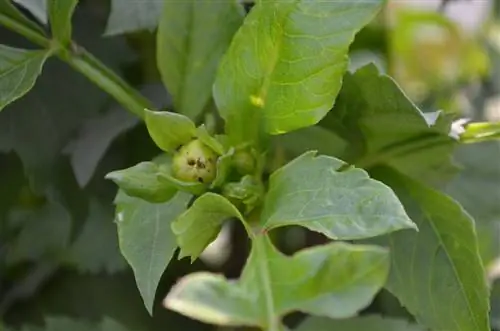
Which pests can attack dahlias and how do you fight them?
Pests such as aphids, leaf bugs, earwigs and spider mites can occur on dahlias. The fight is carried out using natural enemies, soapy water or neem oil. Prevention can be achieved through optimal site conditions, good ventilation and regular checks.
Aphids
The plant sap suckers are often found on young shoots and flower buds. If the infestation is extensive, the shoots show stunted growth and the leaves curl up. Not only the lice themselves, but also the subsequent diseases cause problems for dahlias. The sticky secretions of the pests, known as honeydew, are a breeding ground for sooty fungi.
Mosaic disease
The dahlia mosaic virus is transmitted by plant sap-sucking insects such as aphids. A yellow-green spotting on the leaves is typical, which appears in spring and is reminiscent of a mosaic. The plant suffers from stunted growth and develops stunted plant parts. Since diseased tubers lead to diseased plants, control is only possible by completely removing the affected crops.
This helps against aphids
Spray the aphid colonies with soapy water or neem oil. Beneficial insects such as ladybirds eat aphids. To prevent an infestation, you should grow dahlias in a warm and sunny location. Prevent leaves and flowers from getting wet when watering. Good ventilation of the stocks prevents a damp environment in which the pests feel comfortable.
Sheet bugs
These pest insects prefer warm weather, leading a hidden life and are therefore difficult to detect. There are yellowish sucking spots on the leaves where the bugs have sucked the plant sap. If the plant is severely damaged, it grows stunted. Pricked buds result in stunted or missing flowers.
You can do this
Check the plants in the cooler morning hours, because at this time the leaf bugs, which are around five millimeters in size, are still rigid and not very mobile. Lacewings are important natural enemies. Chemical control by spraying should only be carried out if there is a strong spread.
Earworms
These insects are usually considered beneficial because they eliminate aphid colonies, mites and caterpillars. If this food source is missing, earwigs turn to parts of plants. They leave traces of feeding in the flowers and eat stamens as well as young leaves and buds. Fighting is not recommended.
This is how earwigs can be relocated:
- Fill clay pot with newspaper and wood shavings
- Stretch wire mesh over the opening
- Hang day quarters in the dahlia stands
- Replace pots in fruit trees in the morning
Spider mites
Whitish to yellowish speckles indicate sucking injuries caused by mites. If the infestation is severe, leaves and buds appear pale, yellowish-gray and dried out. If you look closely, you will see a fine web between the leaves and on the undersides of the leaves, in which the red arachnids cavort.
Preventing an infestation
Spider mites depend on long and warm dry periods, which is why they appear particularly frequently in populations when the location is unfavorable. Encourage beneficial enemies such as lacewings, predatory mites and ladybirds.

